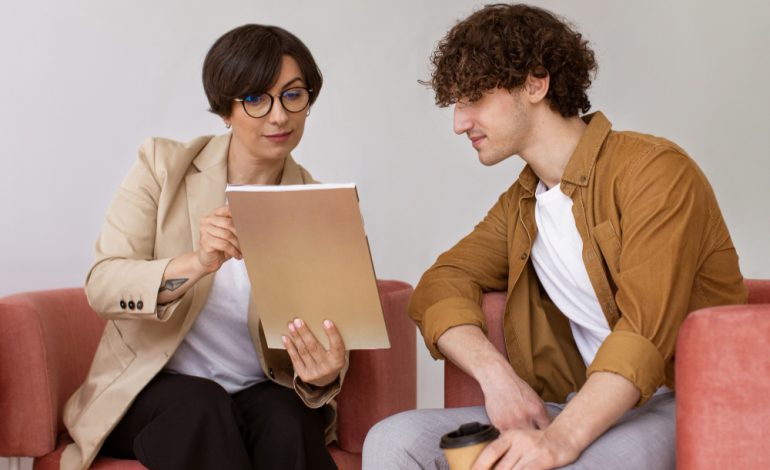
The Art of Communication: Simple Techniques for Better Understanding Others
When most people think about communication, they picture words—a conversation, a speech, an email, or a simple exchange of information. But the truth is that communication is much more layered than just spoken or written language. The deeper essence lies in how tone conveys emotion, how body language reflects inner states, and how context defines the meaning of each message. A friendly “I’m fine” can mean contentment in one situation and concealed frustration in another, depending on the posture, tone of voice, or cultural expectations attached to it.
This subtle complexity shows why communication is not only about transmitting information but also about building human connection. It is through communication that trust is fostered among colleagues, compassion is shown among friends, and understanding is cultivated in family life. Each interaction is a small bridge between perspectives, enabling us to move beyond literal meanings into emotional truth.
Tone is an often-overlooked aspect of interaction. A sentence spoken with warmth can feel supportive, while the exact words, uttered with impatience or sarcasm, can create distance. Similarly, body language—gestures, eye contact, physical distance—provides signals that reveal what isn’t being said directly. Leaning in, for example, may show interest, while crossed arms may suggest defensiveness, even if the person insists they are “open” to discussion. Context, too, plays its role: a workplace comment may carry different weight than the same words spoken at a family dinner, simply because expectations and power dynamics vary.
Understanding these dimensions requires cultivating empathy and patience. To truly listen means to take in not only the words but also the intention and emotion behind them. It means resisting the urge to rush to conclusions. It means respecting cultural diversity, as gestures or expressions may carry different meanings across cultures, and learning to interpret them with sensitivity rather than judgment.
Ultimately, effective communication transforms conversations into opportunities: opportunities to clear misunderstandings before they harden into conflict, opportunities to demonstrate respect in ways that deepen bonds, and opportunities to nurture mutual growth. When seen this way, words are not just tools for exchanging facts but carriers of understanding, reminding us that every dialogue contributes to the strength of relationships and, by extension, communities.
While understanding the foundations of communication is essential, the practical application of techniques is what allows us to make tangible improvements in daily interactions. Developing better communication is not about adopting complicated strategies; rather, it’s often about practicing simple, consistent habits that create space for trust, curiosity, and openness.
One of the most powerful yet underutilized techniques is active listening. This means giving someone your full attention, maintaining eye contact when appropriate, and resisting the urge to prepare your response while the other person is talking. Active listening often involves reflecting back what you hear in your own words: for example, “So what I hear is that you’re concerned about…” This simple act reassures the speaker that their perspective has been understood, while also clarifying any potential misinterpretation before it grows into a misunderstanding.
Another vital skill is thoughtful questioning. Instead of asking yes/no questions that limit expression, open-ended questions encourage depth: “How did that make you feel?” or “What do you think would work best in this situation?” These invite elaboration and show that you value the other person’s perspective. Being nonjudgmental is key here; the goal is not to interrogate or challenge but to explore together, creating an atmosphere of safety and honesty.
Equally important is intentional expression—saying what you mean clearly but with sensitivity. This involves using “I” statements instead of “You” statements. For example, “I feel overwhelmed when deadlines aren’t met” carries a different tone than “You never finish on time.” The first communicates needs without placing direct blame, which helps reduce defensiveness and keeps dialogue constructive.
Slowing down is another underrated practice. Instead of responding immediately in a heated moment, taking a pause allows emotions to settle, which in turn enables you to choose words with more care. Silence, when intentional, can be just as valuable as speaking; it gives the other person space to process, reflect, and express themselves more fully. Striking the balance between silence and dialogue is a mark of maturity in communication.
These techniques are not only useful for preventing or resolving conflicts but also for fostering collaboration. In professional settings, teams that practice open, empathetic communication are often more innovative and resilient because members feel valued and understood. In personal relationships, these approaches strengthen intimacy and trust by prioritizing clarity and respect.
The transformative power of these practices lies in consistency. Communication is not mastered overnight—it is cultivated through repeated effort, small adjustments, and a willingness to learn from missteps. Each intentional conversation builds upon the last, creating a ripple effect that can enrich families, friendships, workplaces, and even larger communities.
The art of communication is not about speaking more but about understanding better. It requires us to tune into tone, body language, and context while also engaging in techniques like active listening, thoughtful questioning, and intentional expression. By combining awareness with practice, we turn conversations from simple exchanges of words into rich encounters that deepen relationships, reduce conflict, and foster cooperation.
When we approach communication as an art—something to cultivate with empathy, patience, and care—we strengthen not only individual bonds but also the communities we are part of. In this sense, every conversation carries the potential to contribute to a more connected, respectful, and understanding world.





